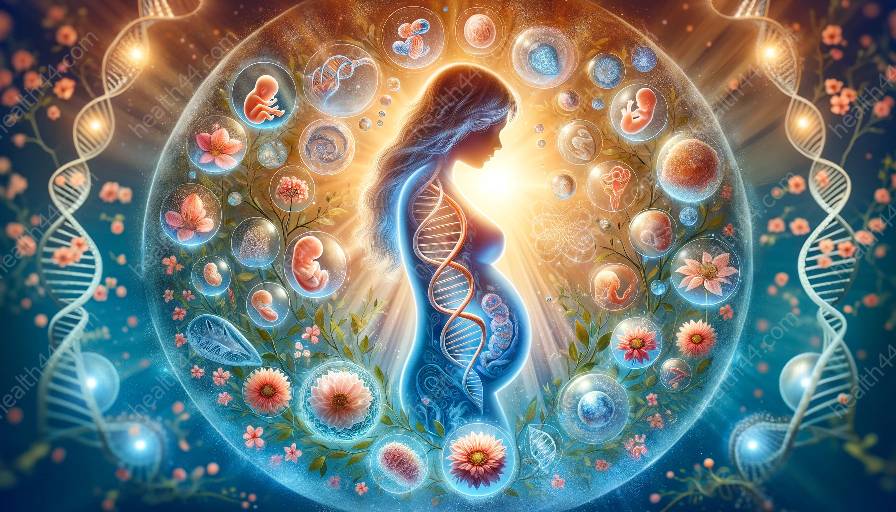Understanding the concept of gene-environment interactions is crucial in unraveling the intricate process of organogenesis and its impact on reproductive health. This article explores how genetic and environmental factors intertwine to influence fetal development, ultimately shaping the future of reproductive health.
The Role of Gene-Environment Interactions in Organogenesis
Organogenesis, the process of organ formation during embryonic development, is influenced by a complex interplay between genetic and environmental factors. Genes provide the blueprint for organ development, while environmental cues shape the expression of these genes, ultimately determining the structure and function of organs.
Genetic Contributions to Organogenesis
Genes play a pivotal role in orchestrating the intricate process of organogenesis. They encode proteins and regulatory elements that control the patterning, differentiation, and growth of organs. Variations in genes can impact the timing and extent of organ development, leading to congenital abnormalities or developmental disorders.
Environmental Influences on Organogenesis
Environmental factors, including maternal nutrition, exposure to toxins, and stress, can profoundly impact organogenesis. These external stimuli can modulate gene expression through epigenetic mechanisms, altering the developmental trajectory of organs. For example, maternal folate intake has been linked to the prevention of neural tube defects, highlighting the significant influence of the environment on organogenesis.
Gene-Environment Interactions and Fetal Development
Gene-environment interactions exert a profound influence on fetal development, shaping the future health and well-being of the offspring. The dynamic interplay between genetic predispositions and environmental exposures during gestation can impact the development of organs and systems critical for reproductive health.
Effects of Gene-Environment Interactions on Fetal Organs
The susceptibility of fetal organs to environmental influences is underscored by gene-environment interactions. Variations in genes related to detoxification pathways can modify the impact of maternal exposure to environmental toxins on fetal organ development. Furthermore, genetic predispositions may render certain individuals more susceptible to adverse environmental exposures, increasing the risk of developmental abnormalities.
Long-Term Implications for Reproductive Health
The complex interplay between genes and the environment during fetal development can have long-term implications for reproductive health. Perturbations in organogenesis due to gene-environment interactions may predispose individuals to reproductive disorders, such as infertility, impaired reproductive organ function, or an increased risk of pregnancy complications.
Relevance to Reproductive Health
The concept of gene-environment interactions is directly relevant to reproductive health, as it underscores the importance of considering both genetic and environmental influences on fertility, pregnancy outcomes, and offspring health.
Factors Affecting Female Reproductive Health
Gene-environment interactions can impact female reproductive health by influencing the development of the female reproductive tract, ovarian function, and hormone regulation. Genetic variations in hormone receptors, combined with environmental factors such as exposure to endocrine-disrupting chemicals, can influence fertility and reproductive outcomes in women.
Implications for Male Reproductive Health
Similarly, gene-environment interactions can affect male reproductive health by modulating the development and function of the male reproductive system, sperm production, and hormone balance. Environmental exposures, such as tobacco smoke or environmental pollutants, can interact with genetic factors to impact male fertility and reproductive organ function.
Conclusion
The concept of gene-environment interactions intricately intertwines with the process of organogenesis and fetal development, exerting a profound influence on reproductive health. By unraveling the complexities of these interactions, we can better understand the origins of reproductive disorders and pave the way for personalized approaches to safeguarding reproductive health.


